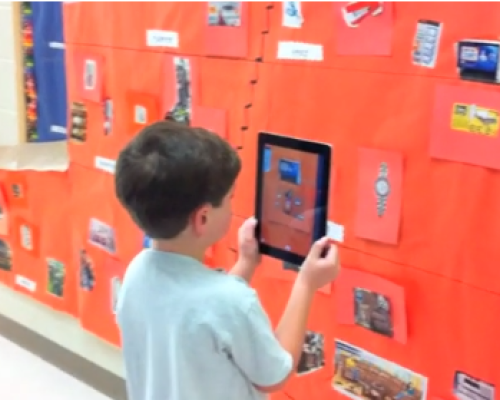The Reality of Augmented Reality in Today's Classrooms
Date
Augmented Reality (AR) and its value in education is a trending topic being discussed and debated among experts in the field of ed tech. While many see great potential with its educational application, others argue that the “cool factor” may be overshadowing its actual benefit.
Many of the augmented reality articles and blog posts you can find online talk about the potential future of AR, that which is too expensive or otherwise not accessible to the general classroom teacher. While I think there is value in imagining what the future of AR might look like, I was curious about how schools are currently using AR in the classrooms and what educational value augmented reality is bringing to their learning.
Moreover, I wanted to find out how schools are using AR apps to produce their own augmented reality environments created by students. Many AR apps are limited in their ability to go beyond a limited subject area or topic (think: planets and stars, or alphabet flashcards). These apps often require you to print PDF cards to access the AR content through the app, and therefore you are limited to the information built into the app. While engaging, students rarely use higher-level thinking, problem-solving, or creative thinking skills. In many cases, the apps simply provide “cool flashcards” with little additional value to be gained from the AR environment.
As it turns out, finding schools using student-created augmented reality environments is challenging. But I did find one school that seems to have harnessed the educational value of AR in a way that can’t be done with other existing technologies. Here’s a few of their recent projects, and a link to the Henrico County Public Schools blog to learn more:
Mrs. Givens 1st grade class was learning about types of motion.
As an entire grade level, each class researched different types of motion that they might find around their houses. Then each student cut out picture examples of types of motion in every room in the house. The teacher created a large paper house to be displayed in the hallway, and students pasted their pictures into the house. Mrs. Givens recorded the students explaining what type of motion their objects used. Using Aurasma, the students attached their videos to their pictures and created an interactive augmented reality display. This video clip shows how these 1st grade students use their tablets to interact with the display.
A second-grade classroom was practicing their creative writing skills over Winter Break.
The school librarian used Aurasma for a Flat Stanley multimodal learning project that combined creative writing, audio, video, and visual arts to create augmented reality “auras” that were shared with another school in Iowa. This video clip shows the beginning of the project.
Ms. Straus’ 5th grade class was learning about the Southeastern states.
The class was divided into groups, and each group became student experts on their assigned state. They created a state poster, recorded a video presentation, and researched links for additional information. Another group reads their poster, uses Aurasma to access the video content, and then taps the screen on their tablet to open a web site with more information. This video clip shows the end of the project, where students are checking out each group’s projects.
With sound pedagogy and instructional design driving the content, augmented reality is a useful tool to enhance a project and engage students in multimodal learning. As seen in these videos, I think the true value lies in students using augmented reality apps to create their own AR environments where they are not limited by what they can create. These examples show the reality of augmented reality in today’s classroom. With some creative thinking, I believe that AR has unique potential in the education space.

